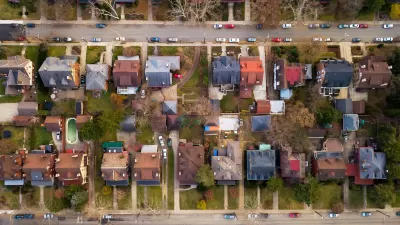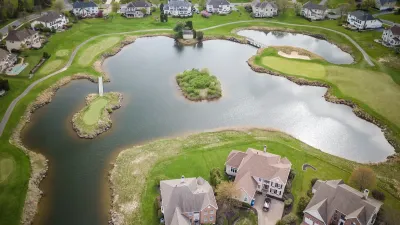A state law known as the Mount Laurel Doctrine mandates that each jurisdiction accommodate enough new housing units to meet the local demand for affordable housing.

In an article for the Morristown Daily Record, William Westhoven describes the tension between some New Jersey suburbs and the state government, which is calling on each local jurisdiction to accommodate enough housing production to meet demand and lower the cost of housing through its Mount Laurel Doctrine, a 1975 law strengthened by 2015 legislation. The doctrine is designed to ease zoning regulations that bar high-density housing.
The state’s Department of Community Affairs is calling for 85,000 new housing units, mostly in the northern part of the state. Some local officials, such as Parsippany Mayor James Barberio, say the push more higher-density housing could strain local infrastructure and budgets and force cities to “sacrifice quality for quantity.”
While some cities are fighting the mandates, others are building hundreds of units of new housing. According to the Fair Share Housing Center, “Since the reinvigoration of Mount Laurel enforcement in 2015, the rate of affordable housing production has nearly doubled.”
According to the DCA, their numbers are non-binding, and “Towns can present their own calculations or challenge the agency's determination based on issues including sewer capacity, slope angles on open space or other environmental concerns. Additional credits can be obtained for certain housing categories including group homes for individuals with disabilities.”
FULL STORY: NJ unveils new affordable housing obligations. How much does your town have to build?

Alabama: Trump Terminates Settlements for Black Communities Harmed By Raw Sewage
Trump deemed the landmark civil rights agreement “illegal DEI and environmental justice policy.”

Planetizen Federal Action Tracker
A weekly monitor of how Trump’s orders and actions are impacting planners and planning in America.

The 120 Year Old Tiny Home Villages That Sheltered San Francisco’s Earthquake Refugees
More than a century ago, San Francisco mobilized to house thousands of residents displaced by the 1906 earthquake. Could their strategy offer a model for the present?

LA’s Tree Emergency Goes Beyond Vandalism
After a vandal destroyed dozens of downtown LA trees, Mayor Karen Bass vowed to replace them. Days later, she slashed the city’s tree budget.

Sacramento Leads Nation With Bus-Mounted Bike Lane Enforcement Cameras
The city is the first to use its bus-mounted traffic enforcement system to cite drivers who park or drive in bike lanes.

Seattle Voters Approve Social Housing Referendum
Voters approved a corporate tax to fund the city’s housing authority despite an opposition campaign funded by Amazon and Microsoft.
Urban Design for Planners 1: Software Tools
This six-course series explores essential urban design concepts using open source software and equips planners with the tools they need to participate fully in the urban design process.
Planning for Universal Design
Learn the tools for implementing Universal Design in planning regulations.
Ada County Highway District
Clanton & Associates, Inc.
Jessamine County Fiscal Court
Institute for Housing and Urban Development Studies (IHS)
City of Grandview
Harvard GSD Executive Education
Toledo-Lucas County Plan Commissions
Salt Lake City
NYU Wagner Graduate School of Public Service





























